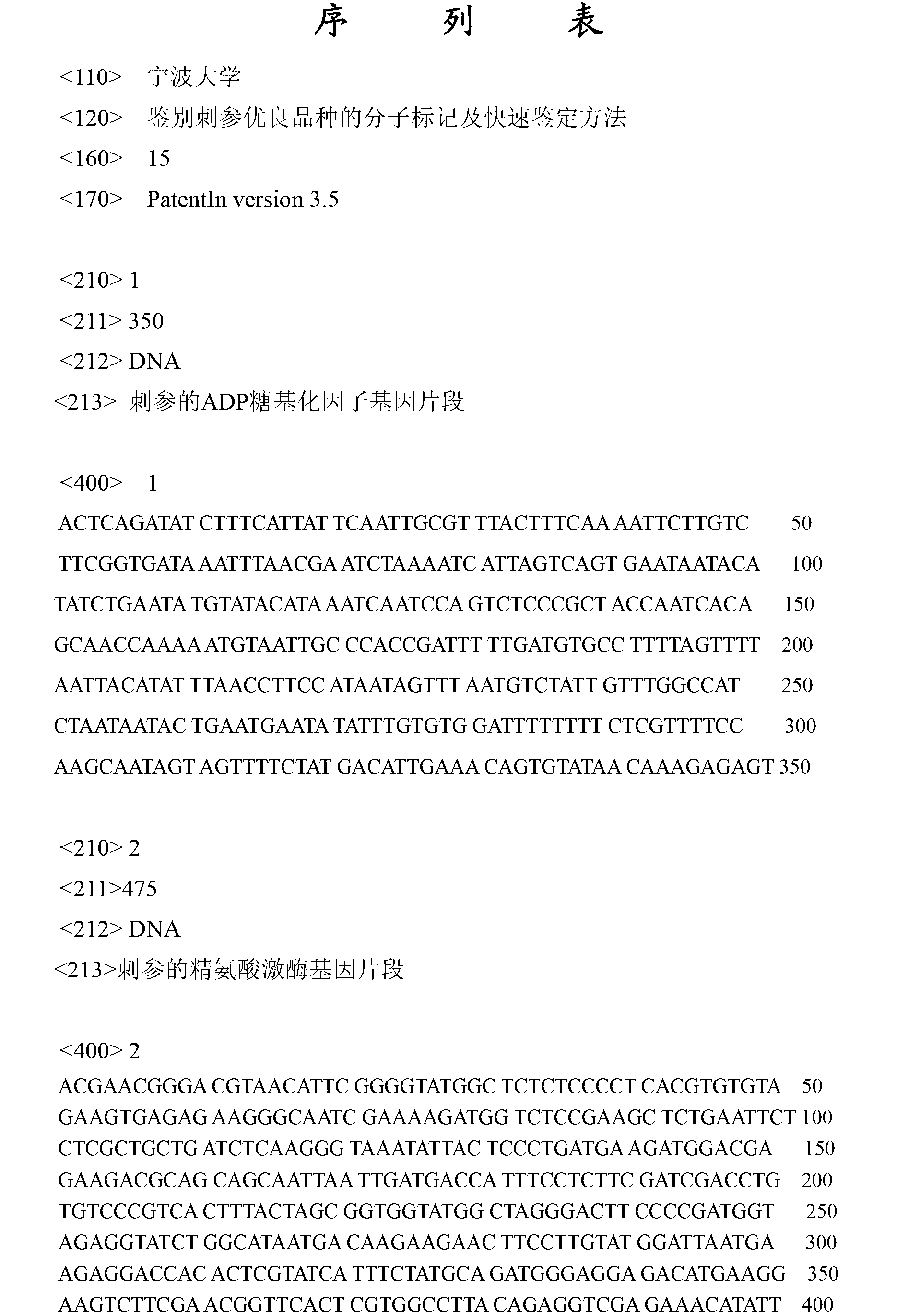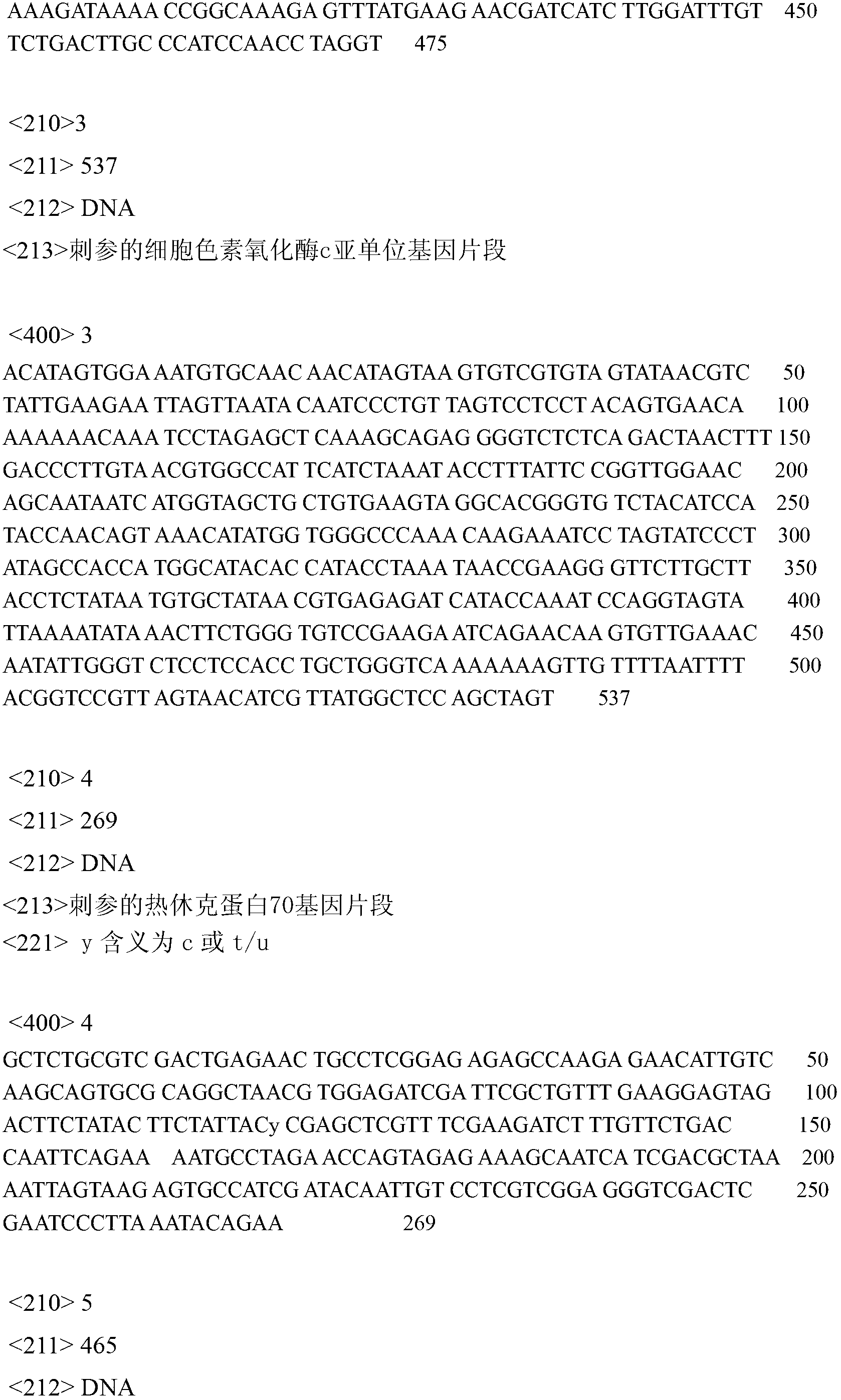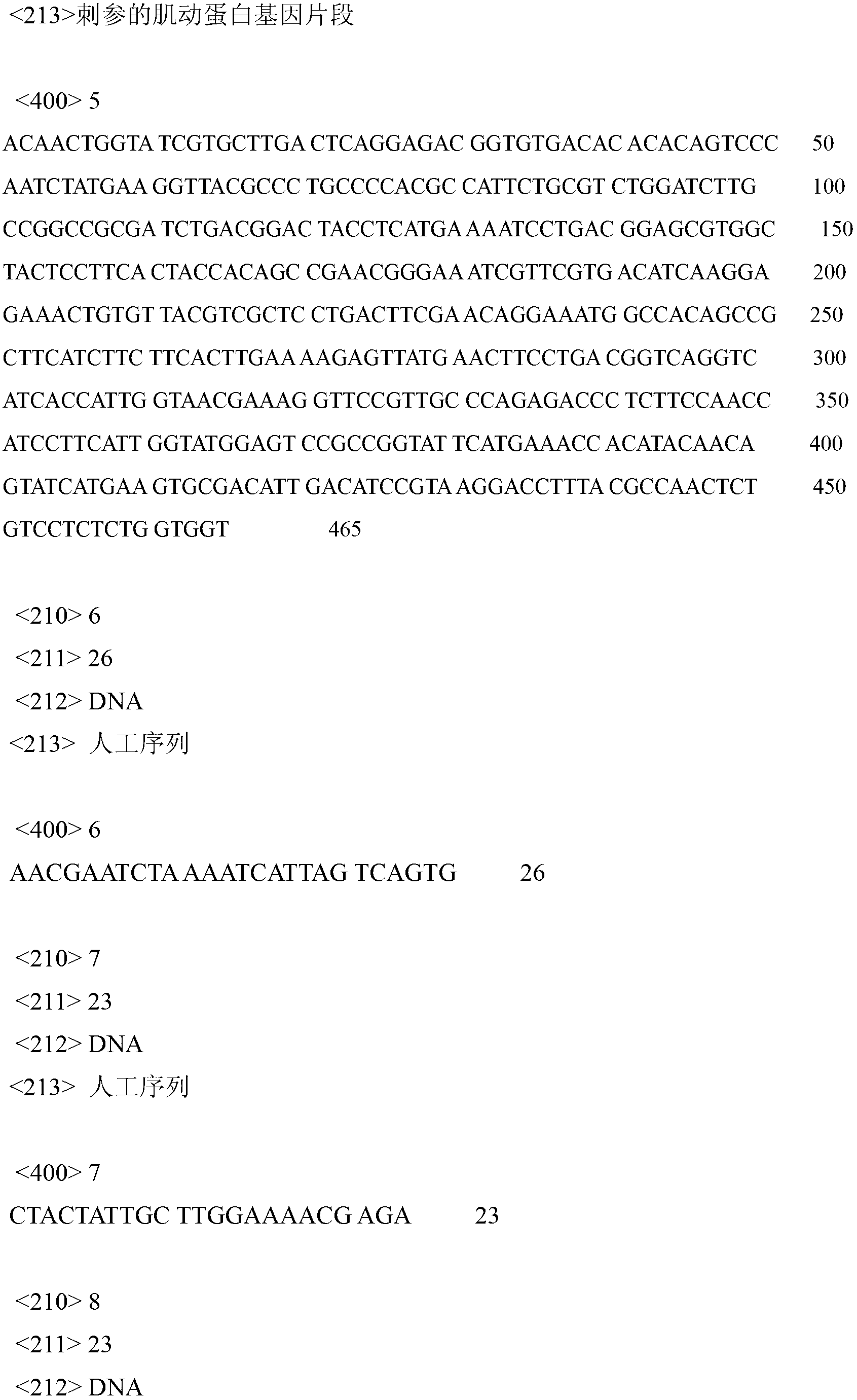Molecular marker and method for identifying excellent stichopus japonicus selenka variety
A technology of molecular markers and excellent varieties, applied in the direction of DNA / RNA fragments, recombinant DNA technology, etc., to achieve the effect of improving breeding efficiency, shortening breeding time, and rapid identification
- Summary
- Abstract
- Description
- Claims
- Application Information
AI Technical Summary
Problems solved by technology
Method used
Image
Examples
Embodiment 1
[0013] In March 2009, 20 live sea cucumbers of about 3g / piece were purchased from Xiangshan Port, Ningbo City, Zhejiang Province, and kept in the laboratory for 2 weeks, changing 2 / 3 volume of seawater every day, and each sea cucumber was followed by the following method Quickly identify whether the sea cucumber variety is good or not:
[0014] 1. Take 1.0 mL of body cavity fluid of sea cucumber, centrifuge at 2000 g for 5 min, collect blood cells, add 1.0 mL of Trizol reagent (purchased from Clontech Company), shake and mix, leave at room temperature for 5 min, then add 0.2 mL of chloroform, shake and mix, and let stand at room temperature 10min, 4°C, 12000rpm, centrifuge for 15min, draw the supernatant into a PE tube, add an equal volume of isopropanol to the supernatant, mix well, let stand at room temperature for 5min, 4°C, 12000rpm, centrifuge for 10min, remove the supernatant, and Add 1 mL of ethanol with a mass percentage concentration of 75% to the precipitation, centr...
Embodiment 2
[0019] The gene fragments of the above-mentioned ADP glycosylation factors, arginine kinase, cytochrome oxidase c subunit, heat shock protein 70, and actin were sequenced separately, and the sequences were identified by Blast software to obtain the gene fragments of ADP glycosylation factors The nucleotide sequence is shown in SEQ ID NO.1, the gene fragment nucleotide sequence of arginine kinase is shown in SEQ ID NO.2, and the gene fragment nucleotide sequence of cytochrome oxidase c subunit is shown in SEQ ID Shown in NO.3, the gene fragment nucleotide sequence of heat shock protein 70 is shown in SEQ ID NO.4, and the gene fragment nucleotide sequence of actin is shown in SEQ ID NO.5, proves that the present invention designs The specificity of each primer.
Embodiment 3
[0022]
[0023]
[0024]
[0025]
[0026]
PUM
 Login to View More
Login to View More Abstract
Description
Claims
Application Information
 Login to View More
Login to View More - R&D
- Intellectual Property
- Life Sciences
- Materials
- Tech Scout
- Unparalleled Data Quality
- Higher Quality Content
- 60% Fewer Hallucinations
Browse by: Latest US Patents, China's latest patents, Technical Efficacy Thesaurus, Application Domain, Technology Topic, Popular Technical Reports.
© 2025 PatSnap. All rights reserved.Legal|Privacy policy|Modern Slavery Act Transparency Statement|Sitemap|About US| Contact US: help@patsnap.com



